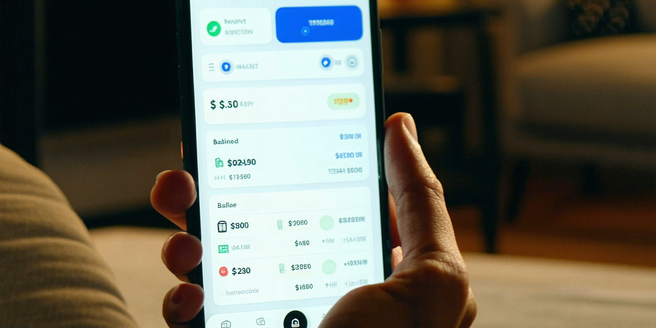Introduction to Online Banking Benefits
| Feature | Description | Benefit |
| 24/7 Access | Access your account anytime | Convenience |
| Digital Statements | Easily view statements online | Paperless and organized |
| Secure Transactions | Advanced encryption technology | Protection |
| Mobile Banking | Bank via your smartphone | On-the-go management |
| Automated Transfers | Schedule payments or transfers | Time-saving |
| Financial Tools | Track spending and budgets | Improved money management |
Understanding Convenience in Digital Transactions
In today’s fast-paced world, convenience is regarded as one of the primary benefits of online banking. With digital transactions, you eliminate the need to physically visit a branch or ATM, saving both time and resources. Transactions can be completed with just a few clicks or taps on your devices, whether you’re at home, at work, or on the go. This accessibility ensures that you can manage your financial obligations without disrupting your busy schedule. Furthermore, online banking platforms often provide users with customizable alert settings, ensuring you stay informed of account activities and balances. This helps to promote financial awareness and responsibility by enabling better monitoring of our personal funds. Ultimately, the overall efficiency and ease of use instilled through digital transactions solidify online banking as a superior choice for those seeking stress-free and swift financial management solutions.
Enhanced Security Measures: Protecting Your Assets
The rise of cyber-security threats makes protecting one’s financial assets a top priority for banks and consumers alike. Online banking institutions invest significantly in implementing highly advanced security measures, designed to safeguard your personal information and transactions. These measures include multi-factor authentication, end-to-end encryption, continuous system monitoring, and secure login procedures. Some banks also offer biometric authentication, like fingerprint and facial recognition, ensuring that only authorized users can access the account. Security protocols are regularly updated to counteract potential threats and vulnerabilities. With the user’s proactive usage of these technologies, such as maintaining strong, unique passwords and staying cautious of phishing attempts, customer accounts can be protected effectively. As a result, future-facing online banking solutions can provide a secure environment for managing finances, offering peace of mind to account holders who prioritize the safety of their financial data.
Cost-Effectiveness: Saving Money with Online Banking
Online banking offers significant cost savings for customers compared to traditional banking methods. By automating routine transactions and reducing dependencies on bank personnel, banks can lower their operational costs. These savings are often passed on to customers through competitive interest rates, lower fees, or even fee waivers on account maintenance. Digital statements and bill payments reduce the need for paper, postage, and additional fees that might be incurred with traditional methods. Furthermore, online banking services frequently feature smart budgeting tools, allowing users to track their spending and optimize their financial strategies effectively. These features encourage savings and give control back to the customers, supporting sound money management practices. Ultimately, online banking presents a budget-friendly option for consumers eager to manage their finances without incurring extra costs, making it an attractive choice for cost-conscious individuals seeking efficient banking solutions.
24/7 Access and Flexibility: Banking on Your Schedule
One of the most attractive benefits of online banking is its 24/7 accessibility. Unlike traditional banks with limited operating hours, online banks provide their customers the flexibility to manage their finances whenever necessary. This unrestricted access ensures that all your financial needs—be it a balance check, bill payments, or money transfers—can be handled efficiently and swiftly at any time of the day. This service flexibility is critical for individuals with unpredictable work hours, business travelers, or international clients often operating in different time zones. Furthermore, online banking adapts to the digital era’s demand for instantaneous availability and service delivery, allowing users to stay on top of their finances while integrating their banking activities seamlessly into their daily lives. With around-the-clock access, users can take charge of their financial objectives and enjoy a level of banking convenience and flexibility previously unimaginable.
Streamlined Financial Management Tools
Online banking offers a suite of tools designed to help you manage your finances effectively. These tools make it easy to track your spending, set up automatic bill payments, and monitor your accounts in real time. Many online banking platforms also provide budgeting applications that categorize transactions and assist in creating forecasts based on your historical spending habits. These features offer users a comprehensive view of their financial status, which promotes better budgeting and spending practices. Financial management tools are critical for maintaining an organized and profitable financial life, helping users make informed decisions regarding saving and investing. Online banking’s integration with personal finance software further enhances this by syncing your financial activities across different platforms, preventing overspending and managing debts efficiently. These sophisticated tools empower consumers with the knowledge and resources needed for better financial control.
The Role of Technology in Banking Efficiency
Technology plays a pivotal role in the efficiency of modern banking by automating and optimizing various processes that previously required significant time and resources. From real-time transaction processing to automated customer service through AI-powered chatbots, technology ensures banking operations are swift and error-free. Technological advancements such as blockchain and machine learning are further set to revolutionize this industry by enhancing the speed, accuracy, and security of financial services. Automation of routine tasks such as statement generation, account monitoring, and even fraud detection enhances accuracy and reduces the risk of human error. Additionally, technology-driven data analytics enables banks to gain valuable insights into customer preferences and behaviors, personalizing the user experience and building long-term customer relationships. It ensures that the services provided are both innovative and beneficial, presenting a seamless and highly efficient banking experience to every customer.
User Experience: Navigating Modern Banking Interfaces
The user experience is pivotal in determining how seamlessly individuals interact with online banking platforms. Today’s systems prioritize intuitive design, user-friendly navigation, and aesthetic appeal to create a smooth, efficient interface accommodating users of all skill levels. Personalization of dashboard views and customization of alerts empower users to tailor their experiences according to specific needs, making financial management more relevant and interaction effortless. Modern interfaces focus on simplicity to prevent users from becoming overwhelmed by excessive options or technical complexities, guiding them fluidly through their tasks. This user-centric design promotes better engagement and satisfaction, ensuring customers enjoy banking activities rather than viewing them as cumbersome chores. Furthermore, these interfaces often incorporate accessibility features, allowing users with different needs or disabilities to engage equally, highlighting more inclusive and equitable approaches to modern banking service provision.
Environmental Impact: Going Paperless with Banking
Online banking significantly reduces the environmental footprint of banking practices by digitizing many traditional processes. Paper-free banking includes electronic statements, digital correspondence, and online transactions, which minimize the need for physical documents. Through reduced reliance on paper, we observe a decrease in paper waste, energy consumption, and deforestation, contributing positively to environmental sustainability efforts. Moreover, customers are encouraged to adopt eco-friendly practices by engaging in electronic documentation, reducing physical courier reliance and subsequent carbon emissions. Implementations of green technology by banks, such as energy-efficient data centers and renewable energy utilization, further emphasize the environmental compatibility of such practices. This sustainable approach fosters responsible consumption and enables individuals to make environmentally conscious financial management choices. As the global momentum towards environmental preservation intensifies, online banking’s paperless practice sets the benchmark for eco-friendly financial services.
Future Trends in Online Banking Innovations
The future of online banking is heralded by ongoing technological innovations set to redefine how financial services are delivered. Cutting-edge developments such as artificial intelligence and blockchain promise enhanced efficiency and transparency in banking transactions. Additionally, the rise of embedded finance, which integrates banking functionalities into non-banking platforms, is slated to create seamless financial interactions without switching apps or platforms. With contactless payments already evolving, digital currencies and stablecoins are likely to become common fixtures, further expanding convenient financial transaction methods. We anticipate increased personalization within banking interfaces, powered by data analytics and AI, offering customized solutions tailored to individual financial goals and behaviors. As technology continues to advance, online banking will undoubtedly grow in complexity, adaptability, and efficacy, broadening horizons for futuristic transaction-processing and financial management paradigms. These trends not only signal evolving customer expectations but also the banking sector’s commitment to innovation-driven progress.



